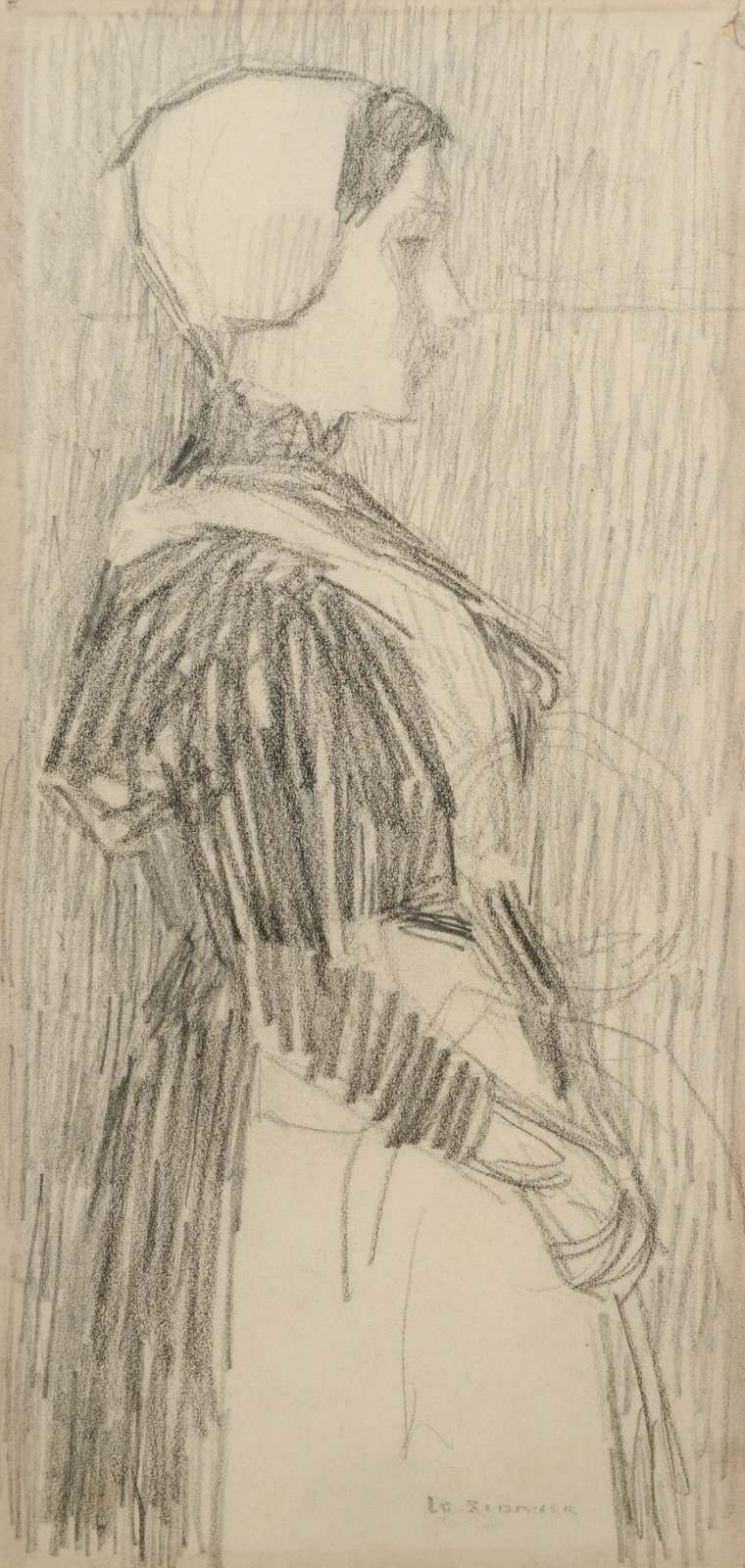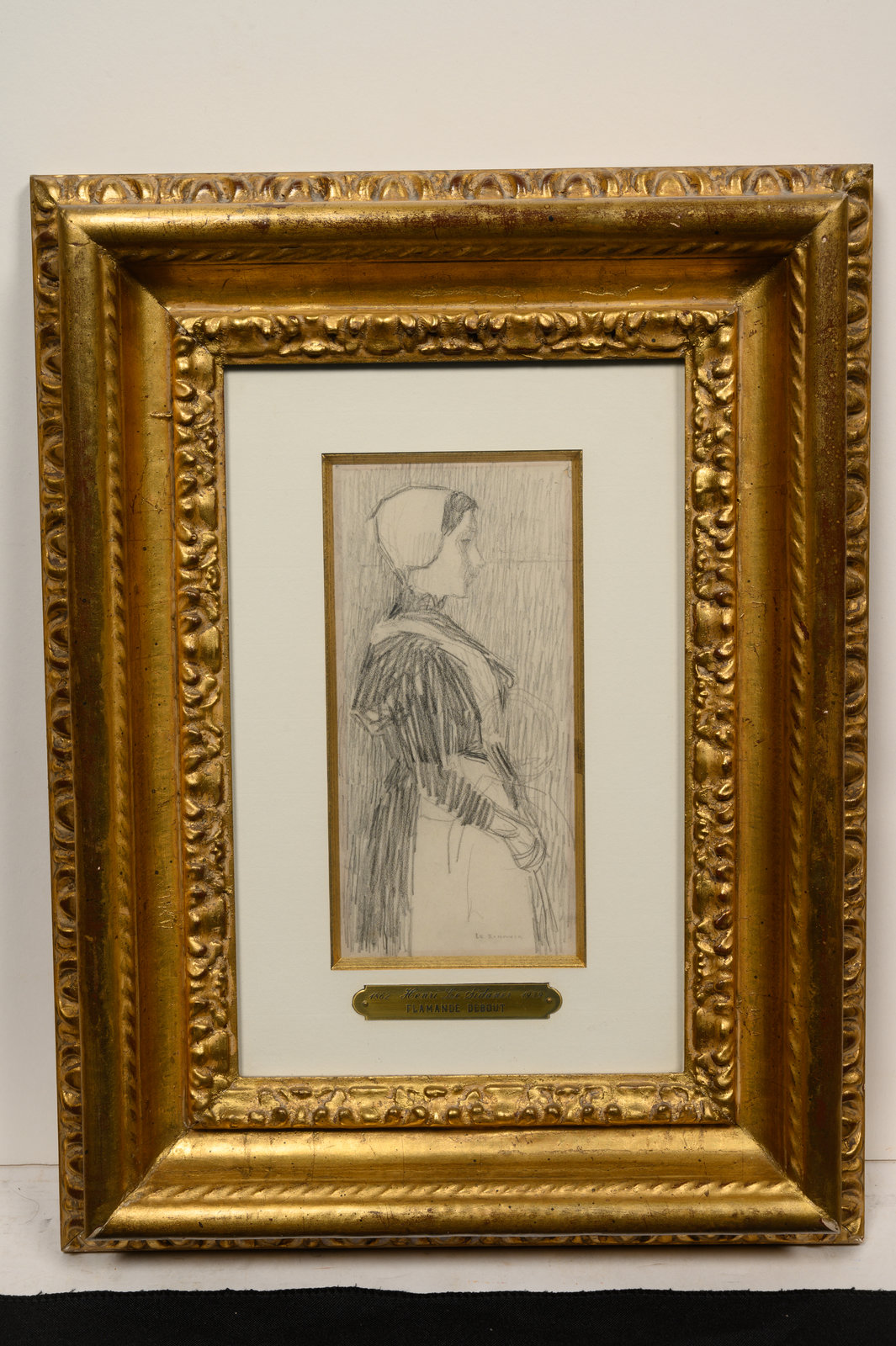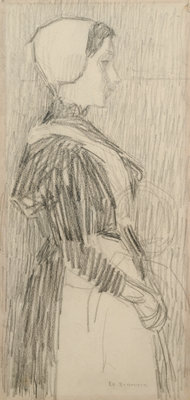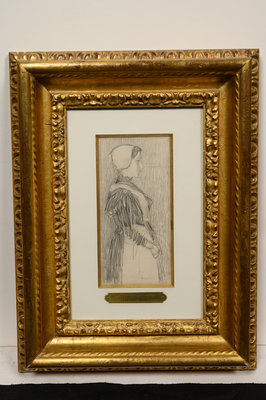Henri Le Sidaner
(French, 1862-1939)
Flamande, c. 1899
Sale 869 - American & European Art
May 3, 2021
10:00AM CT
Live / Chicago
Estimate
$2,000 -
$4,000
Sold for $2,125
Sold prices are inclusive of Buyer’s Premium
Lot Description
Henri Le Sidaner
(French, 1862-1939)
Flamande, c. 1899
graphite on paper
signed Le Sidaner (lower right)
7 ¼ x 3 ½ inches.
Property from the Miriam B. Swanson Trust, Chicago, Illinois
Provenance:
Galleries Maurice Sternberg, Chicago
Acquired directly from the above, December 1973
Literature:
Yann Farinaux-Le Sidaner, Le Sidaner: L'Oeuvre Peint et Grave, Paris, 1989, no. 846, p. 301, illus.
Lot essay:
The twilit gardens and hushed city scenes of Henri Le Sidaner’s artworks conjure a seductive, mysterious world. Throughout his career, Le Sidaner remained chiefly concerned with capturing atmospheric light and favored a subdued use of color, preferring nuanced greys and opals applied with uneven, dappled brushstrokes. Le Sidaner developed his distinctive lexicon during the 1890s, under the influence of Symbolism. On a formal level, he found a suitably harmonious, all-over treatment for his compositions in Impressionism. This dual aspect of his art was touched on by the critic, and his supporter, Camille Mauclair who wrote: "born out of Impressionism, [Le Sidaner] is as much the son of Verlaine than of the snowscenes of Monet" (C. Mauclair, Henri Le Sidaner, Paris, 1928, p. 12).
Born in 1862 in Mauritius, to Breton parents, in 1872 Le Sidaner’s family settled in Dunkirk, France. In 1882 he left for Paris to study at the École des Beaux-Arts under Alexandre Cabanel. However, Le Sidaner shortly after left because of artistic differences. He relocated to the Ètaples artist colony, which had a tradition of en plain air painting established by Charles-François Daubigny and of the local Deauville painter Eugène Boudin, a leading Post-Impressionist. In the late nineteenth-century numerous artists were drawn by the sand dunes, the atmospheric light and the remnants of an older France.
In 1895 Le Sidaner left Étaples and moved again to Paris, likely for career reasons. The Paris stay was short but significant, as in 1898 he eloped to Bruges with Camille Navarre, to whom he was subsequently married. For Le Sidaner the years in Bruges were pivotal to his subsequent artistic career. It was here that he painted a series of nocturnes exploring the gloaming light around dusk. Although many of these artworks omit figures, around 1899, the artist executed a series of drawings that depict a standing woman and child, of which Flamande is included. The finished figure of the woman in this drawing is seen in profile and dressed in traditional Flemish costume. A simple line sketch of a small child can be seen standing within her embrace.
Condition Report
The physical condition of lots in our auctions can vary due to
age, normal wear and tear, previous damage, and
restoration/repair. All lots are sold "AS IS," in the condition
they are in at the time of the auction, and we and the seller make
no representation or warranty and assume no liability of any kind
as to a lot's condition. Any reference to condition in a catalogue
description or a condition report shall not amount to a full
accounting of condition. Condition reports prepared by Hindman
staff are provided as a convenience and may be requested from the
Department prior to bidding.
The absence of a posted condition report on the Hindman website or
in our catalogues should not be interpreted as commentary on an
item's condition. Prospective buyers are responsible for
inspecting a lot or sending their agent or conservator to inspect
the lot on their behalf, and for ensuring that they have
requested, received and understood any condition report provided
by Hindman.
Please email conditionreports@hindmanauctions.com for any additional information or questions you may have regarding this lot.









